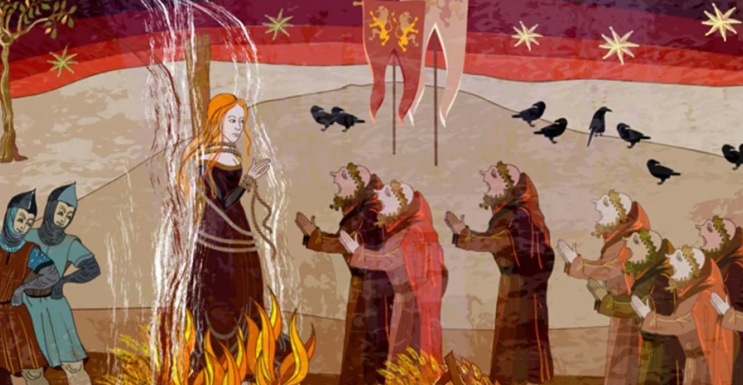
Weather and Inquisition: Climate, Crisis, and the Search for Evil in Medieval and Early Modern Europe during Little Ice Age
Weather and Inquisition: Climate, Crisis, and the Search for Evil in Medieval and Early Modern Europe during Little Ice AgeThe Middle Ages and early modern period in Europe were marked by profound societal upheaval, much of which was deeply intertwined with climatic anomalies. From weak solar cycles and volcanic winters to anomalous oceanic patterns and atmospheric blocks, the deteriorating weather conditions often coincided with crises of famine, disease, and mass hysteria. In this era of limited scientific understanding, natural disasters were often explained in terms of supernatural forces, with tragic consequences: the rise of the Inquisition and the burning of witches. This article explores the climatic context of European history from the 13th to 17th centuries, and how changes in weather contributed to social disintegration, scapegoating, and organized persecution.
I. Weak Solar Cycles and the Little Ice Age
The Medieval Warm Period (ca. 900–1300 CE) gave way to the Little Ice Age (LIA) (ca. 1300–1850), marked by at least four significant solar minima:
- Wolf Minimum (1280–1350)
- Spörer Minimum (1460–1550)
- Maunder Minimum (1645–1715)
- Dalton Minimum (1790–1830)
During these periods, sunspot activity diminished, correlating with weakened solar irradiance and lower global temperatures. Proxy data from tree rings and ice cores show widespread glacial advance, even into cultivated land. Resulting effects included:
- Longer, harsher winters with frost penetrating deeply into the soil
- Shortened growing seasons, especially for wheat, rye, and grapes
- Crop failures in regions dependent on marginal agriculture
These climate shifts had cascading effects on human health, demographics, trade, and social stability, particularly in agrarian economies lacking food storage systems.

Reconstructed sunspot number R z time series for the years 1000 – 1999 AD. Source: https://www.researchgate.net/figure/Reconstructed-sunspot-number-R-z-time-series-for-the-years-1000-1999-AD_fig4_226333495
II. El Niño and the Atmospheric Oscillations
Climatic cooling was compounded by El Niño–Southern Oscillation (ENSO) events, which influenced the Arctic Oscillation (AO) and North Atlantic Oscillation (NAO):
- Negative phases (AO-/NAO-) favored meridional flow patterns, enabling Arctic air intrusions into Central and Western Europe
- The weakened Azores High and Icelandic Low allowed blocking highs to form, stagnating cold weather systems
These dynamics led to:
- Frigid winters (e.g., 1432–33, 1565–66, 1695–97) with extended snow cover and ice-bound rivers
- Early autumn frosts and late spring snowfalls, shortening the viable period for planting and harvesting
- Droughts in southern Europe alternating with floods in the north, disrupting regional food trade
Such patterns repeatedly led to localized starvation, even in otherwise prosperous areas, creating social pressures that fed into xenophobia, religious paranoia, and the hunt for hidden enemies.
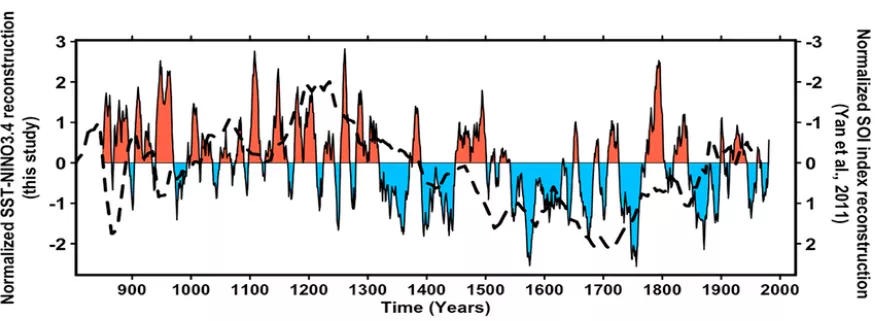
Reconstructed ENSO during the Little Ice Age. Source: https://www.researchgate.net/figure/Past-El-Nino-Southern-Oscillation-variability-reconstruction-Blue-Red-Time-series-of_fig11_366036014
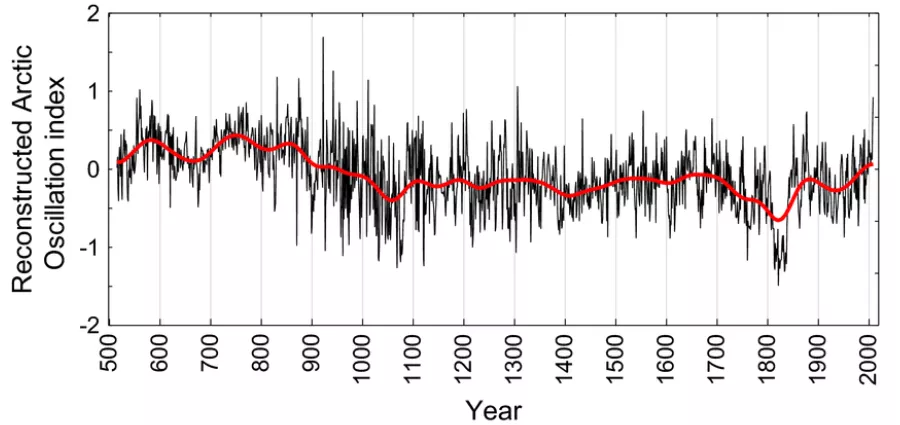
Reconstructed AO index during the Middle Ages. Source: https://www.researchgate.net/figure/Annually-resolved-reconstructed-Arctic-Oscillation-AO-index-in-May-inferred-from-dO_fig4_354830823
III. Frozen Rivers, Shattered Harvests, and Maritime Disruption
Chroniclers and parish records from the 14th century onward describe unprecedented winter events:
- The Baltic Sea froze so thoroughly in 1303, 1306, 1378, 1423, and 1658 that armies crossed it on foot and with carts (e.g., Charles X of Sweden’s March Across the Belts in 1658)
- The Adriatic Sea froze near Venice, destroying salt pans and trade infrastructure
- The Thames Frost Fairs (1608–1814) became cultural responses to recurring freezes
Consequences:
- Fruit orchards and vineyards devastated by repeated frost cycles
- Snowfalls in June and July, particularly in 1573, 1595, 1601, and 1816 — destroyed cereal crops just before harvest
- Flooding from snowmelt combined with spring storms washed away planted fields
Archeobotanical studies show a shift from grape and olive cultivation to hardy grains in southern France and northern Italy. Fishermen reported fish kills due to ice-bound estuaries and oxygen deprivation, affecting protein intake among the poor.
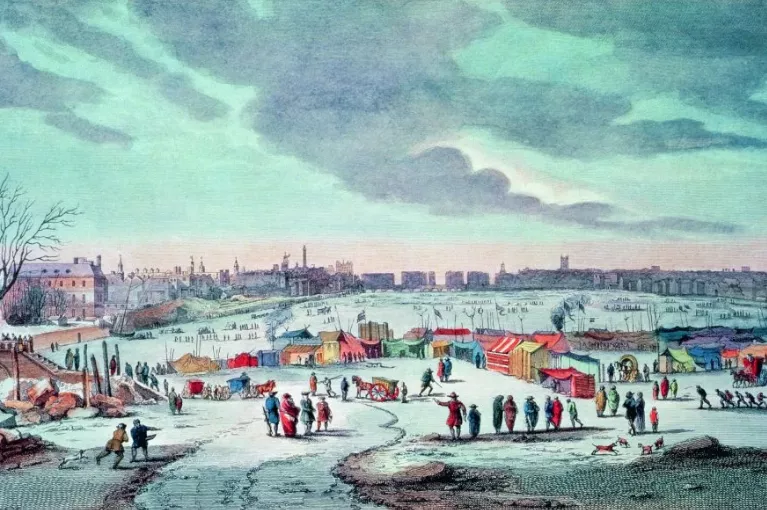
The Thames turned to ice during the Little Ice Age, gales flattened communities, and famine killed peasants in their thousands. Source: https://www.historyextra.com/period/victorian/frozen-little-ice-age-britain-thames-freeze-when/
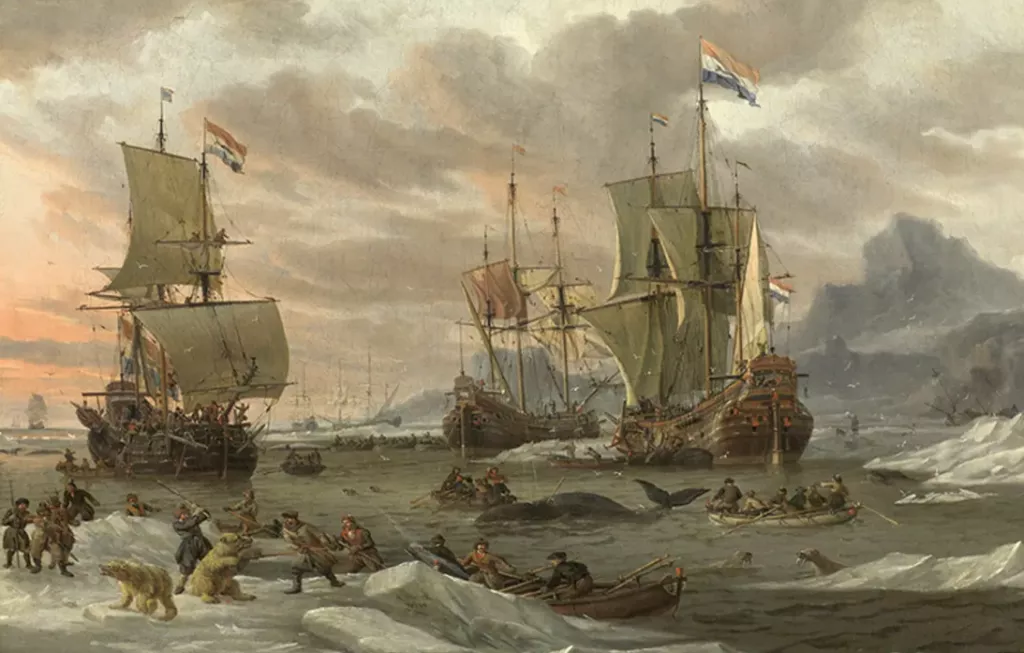
Whaling Grounds in the Arctic Ocean by Abraham Storck, 1654-1708. Courtesy the Rijksmuseum, Amsterdam. Source: https://aeon.co/essays/the-little-ice-age-is-a-history-of-resilience-and-surprises
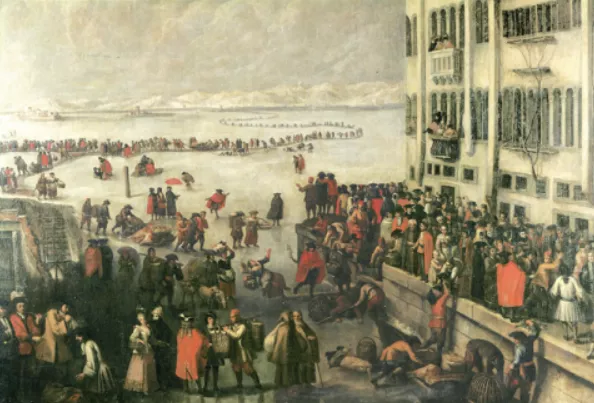
Painting of the frozen Lagoon in Venice, January 1789. Source: https://journals.openedition.org/mediterranee/7005
IV. Hunger, Plague, and the Breakdown of Order
Europe’s population, estimated at ~75 million in 1300, was already approaching the limits of agricultural productivity. When adverse weather hit, it caused:
- The Great Famine (1315–1317), where relentless rain rotted stored grain and mold contaminated rye (likely contributing to ergotism)
- Hunger riots in cities such as Ghent, Rouen, and London
- Survivors often malnourished, facilitating the rapid spread of the Black Death (1347–1352)
Plague mortality data:
- Urban mortality up to 70% in some areas (e.g., Florence, Avignon)
- Rural regions depopulated, leading to abandoned villages (Wüstungen) in Germany and Poland
- Labor shortages reshaped feudal structures, but also fueled resentment and religious extremism
As social trust broke down, millenarian movements, flagellant cults, and conspiracy theories about Jews, lepers, and witches proliferated.
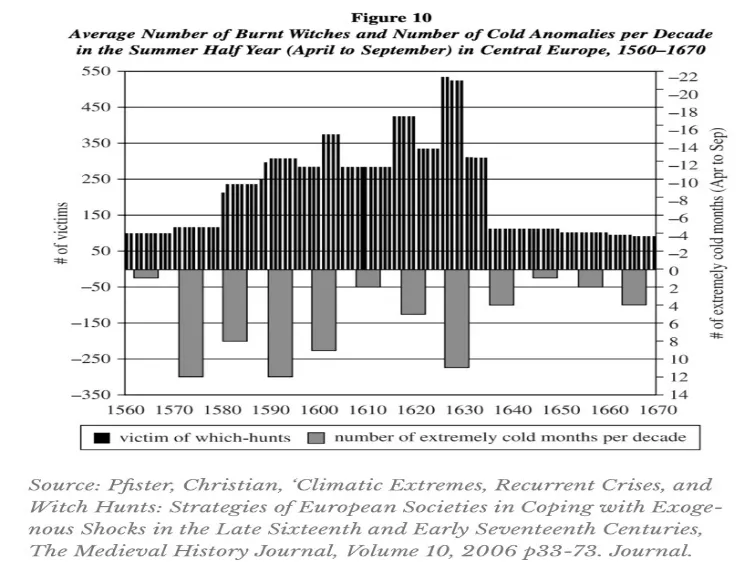
Average Number of Burnt Witches and Number of Cold Anomalies per Decade in the Summer Half Year in Central Europe 1560-1670. Source: The Medieval History Journal.

Correlation of the British Witch Trials with UK Price Index (Inflation) during the Middle Ages. Source: https://www.investmentoffice.com/Observations/Beyond_Finance/Popular_Delusions_2.html
V. Volcanoes and the “Year Without a Summer”
Volcanic eruptions emitted sulfate aerosols into the stratosphere, dimming sunlight:
- 1257: Samalas eruption (Lombok, Indonesia) — linked to severe European winters and failed harvests by 1258–60
- 1452/53: Possible submarine caldera eruption — one of the largest of the millennium
- 1600: Huaynaputina — reduced solar radiation over Russia and Poland; famines led to social collapse during the Time of Troubles
- 1815: Tambora — caused the Year Without a Summer (1816) with snow in July in Hungary and New England
Climatological impacts:
- Reduced photosynthesis, lowering yields by up to 60% in wheat and barley
- Mass migrations from alpine zones into cities
- Starvation-related crime, including grain theft, kidnapping, and cannibalism
In the wake of such trauma, societies often turned to religious authorities and apocalyptic interpretation, demanding the expulsion or execution of those “causing” the disaster.

An Year after the Eruption of Tambora (1815), the Effects were felt in the Northeastern United States, where Vital Corn Crops withered from Killing Frosts. Greg Harlin/Wood Ronsaville Harlin. Source: https://www.smithsonianmag.com/history/blast-from-the-past-65102374/
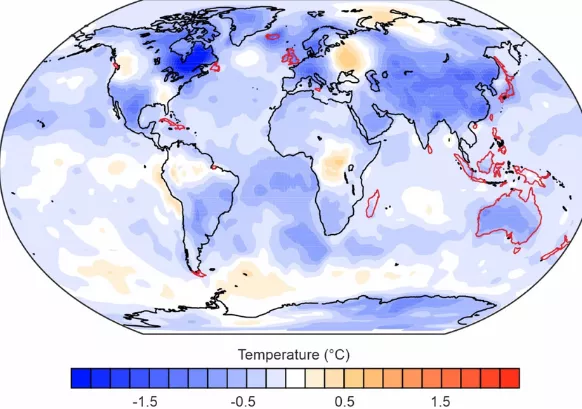
Reconstructed Temperature Anomalies in 1816 (“the Year without a Summer”). Source: https://www.researchgate.net/figure/Reconstructed-temperature-anomalies-in-1816-the-year-without-a-summer-relative-to-the_fig3_369013004
VI. The Scapegoats: Witches and Heretics
In a world where climate events were seen as divine punishment, the need for human agents of evil became irresistible. Women—especially widows, herbalists, and midwives—were frequently labeled as weather-makers or blight-bringers.
Accusations often followed:
- Sudden storms at market time
- Hail on feast days
- Miscarriages of livestock or human children after a woman’s passing glance
Doctrinal reinforcement came from:
- 1484: Papal bull Summis desiderantes affectibus — authorized Inquisition against witches
- 1487: Malleus Maleficarum by Heinrich Kramer — became the standard witch-hunting manual
This ideology dovetailed with climate stress, providing an explanation for suffering and a ritualistic outlet for collective rage.

Illustration image. Source: https://www.ancient-origins.net/news-history-archaeology/witches-bochnia-0014846
VII. Trials, Torture, and Execution
Witch trials peaked during periods of greatest climate stress:
- 1570–1630: Coldest phase of LIA and the deadliest phase of witch burnings
- Towns like Trier, Würzburg, and Bamberg executed hundreds of alleged witches, often after failed harvests
- Legal records show correlations between hailstorms and witchcraft accusations the same year
Judicial torture led to:
- Forced confessions of weather manipulation, devil pacts, night flights
- Naming of others under duress, leading to mass panics
- Execution by fire, beheading, or hanging
These acts served as public catharsis, but also consolidated clerical and state power in fragile societies.
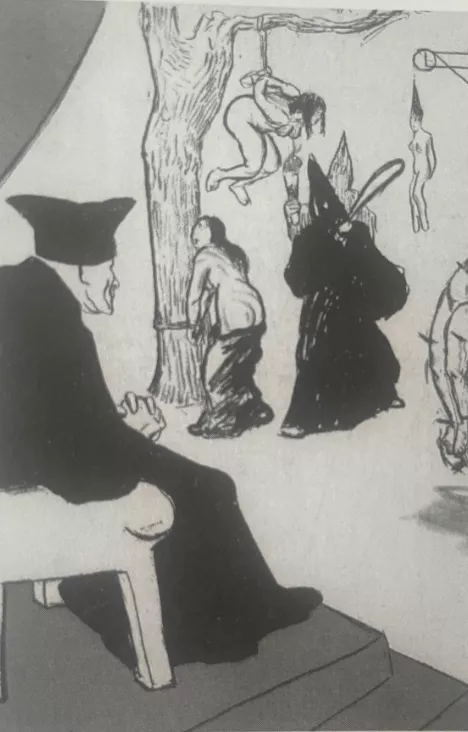
An Illustration from the Spanish Inquisition. Source: Witch Hunt: History of a Persecution by Nigel Cawthorne
VIII. Gender, Climate, and Social Power
Roughly 75–85% of accused witches were women. Climate stress interacted with gender norms:
- Widows were vulnerable due to land disputes
- Healers were viewed as suspicious during plagues and famine
- Childless women accused of causing infertility in animals and fields
In Scandinavia, ice storms and livestock epidemics triggered hunts. In Alpine regions, snow in grape harvest season preceded witch burnings. The climatological record aligns disturbingly with peaks in persecution, especially in Catholic borderlands.
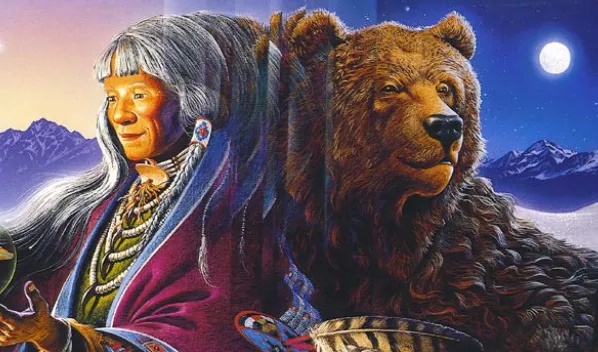
Healers and Shamans with pre-Christian Philosophy of Life were among the Victims of the Inquisition, too. Source: https://www.pinterest.com/pin/bear-shaman–18084835973597605/
IX. From Fire to Enlightenment
The late 17th to early 18th centuries saw a gradual retreat from religious-based climate explanations:
- Development of barometers, thermometers, and weather diaries
- Legal reforms limited torture-based confessions
- Philosophers like Voltaire and Bayle criticized witch trials as irrational and un-Christian
But even as Enlightenment ideals spread, memories of hunger and trial-by-fire remained in folk belief, poetry, and cautionary tales.
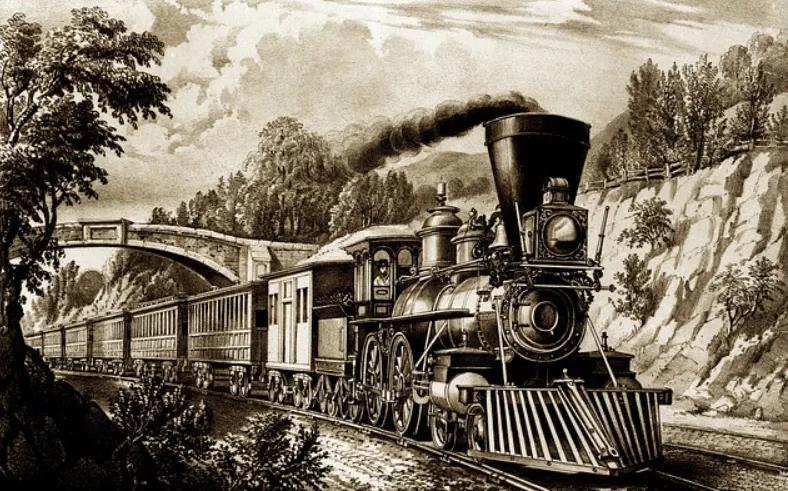
The Industrial Revolution has started the Global Warming and the End of the Witch Trials. Illustration picture: https://albernisteamtrain.com/did-the-steam-engine-start-the-industrial-revolution/
Conclusion: Weather as a Catalyst of Persecution
The link between climate anomalies and societal persecution is deeply embedded in European history. It reveals a grim sequence:
- Cold Weather shocks → Food Stress → Social Disorder →Scapegoating
The 21st century faces its own climate challenges. While science provides better explanations today, the psychological mechanisms remain. Fear, confusion, and desperation can still breed moral panics. History reminds us that weather has never been just about temperature—it shapes belief, power, and human cruelty.
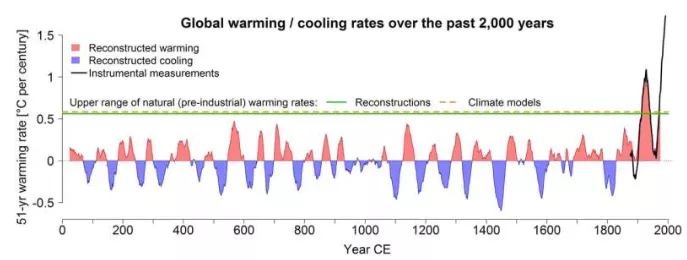
Temperature trends in the last 2000 y. Source: https://phys.org/news/2019-07-20th-century-unmatched-years.html
As the world warms and extremes multiply, will we remain rational—or repeat the cycle of accusation and fire?

